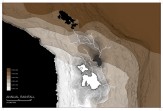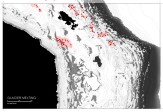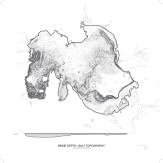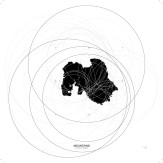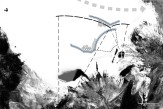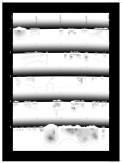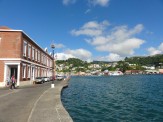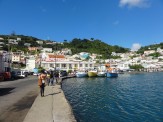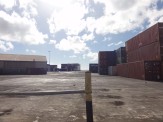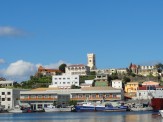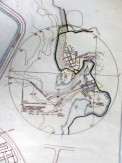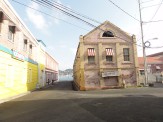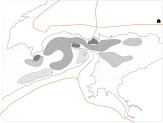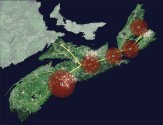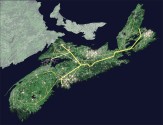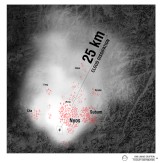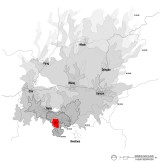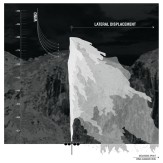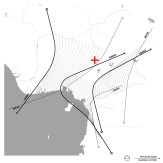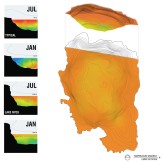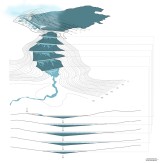Master of Architecture II Spring 2010

End of the Year Exhibition 2010
MAXIMUM WITH MINIMUM
Professor: Diana Agrest
Instructor: Masha Panteleyeva
The students were asked to select a site with extreme geophysical and weather conditions – day / night / seasonal. Each site was to be located at an edge between land (rock, above or below) and water (sea or river). The program given was a habitable settlement created using the elements of nature at the site: air, sun, fire, water, soil, flora, etc. An activity of production in the settlement was also intended to relate to the natural conditions.
< Back to Selected Graduate Design Studio Projects
VIEW INDIVIDUAL PROJECTS BELOW
Projects
-
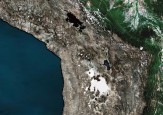
Fresh Flat
-
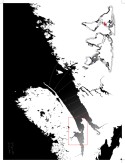
Tracing Tides
-
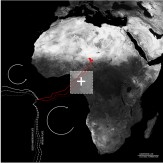
Spilling the Soda
Back
Fresh Flat
Fresh Flat
Mark Faulkner
Located in the southwest corner of Bolivia, the Salar de Uyuni is the world’s largest salt flat. This project looks into the ecology of the salt flat, studies the vanishing point of the horizon and then looks for opportunities to create solar desalination plants hidden by the curvature of the earth.
Tracing Tides
Tracing Tides
Noam Shokeid
Following the shape of the tidal range conditions found in the Bay of Fundy, this project proposes a nomadic settlement whose structure fluctuates along the bay, taking the form of the changing water currents. Maximizing the process of tidal energy generation, the floating settlement provides energy for the entire province of Nova Scotia.
In representing the natural forces and water patterns evident in the bay, this project calls for a re-examination of conventional practices of sustainable design and for a re-embracement of nature into architectural discourse.
Spilling the Soda
Spilling the Soda: Mitigating Limnic Eruptions at Lake Nyos
Dustin Tobias
A limnic eruption, or lake overturn, is a naturally occurring geophysical event in which sequestered gasses are abruptly discharged from deep lake waters. First documented at a chain of volcanic lakes in Cameroon in 1984, the toxic clouds produced through this rare phenomenon threaten the breathable environments of all nearby plants and animals with the potential for swift and silent asphyxiation. The most devastating limnic eruption on record occurred in August 1986 at Lake Nyos, Cameroon, where a dense cloud of carbon dioxide was responsible for over 1,700 fatalities in nearby villages. Despite the fertile agricultural potential of the Nyos Valley, displaced survivors of the 1986 disaster remain ecological refugees, unable to return to their homeland due to the threat of the volatile lake.
In 2001, a multinational team of researchers successfully tested a degassing system at Lake Nyos. Suspended from a buoy, a flexible pipe forms a conduit between the gas-saturated deep waters and the surface of the lake. Once activated, the system becomes self-sustained through pressure differentials; continually discharging a 250 foot spout that releases safe-levels of CO2 into the atmosphere. In this sense, increasing the carbon footprint of Lake Nyos is the key to its salvation. Through this towering geyser, the Lake's invisible threat is alleviated and simultaneously materialized into a visual spectacle.
This project proposes that an expansion and restructuring of the existing Lake Nyos degasification infrastructure could be used to generate a synthetic natural wonder. Additional piping buoys would be inserted into the lake and strategically reconfigured to create a variety of water features on the surface and shore of the lake. These choreographed lake waters could be used to stimulate tourism, creating a new economic potential for returning villagers. In this mitigation of the limnic eruptions of Lake Nyos, the same natural forces that produced the catastrophic fog of 1986 would shape the seductive mists that return life to the valley.

